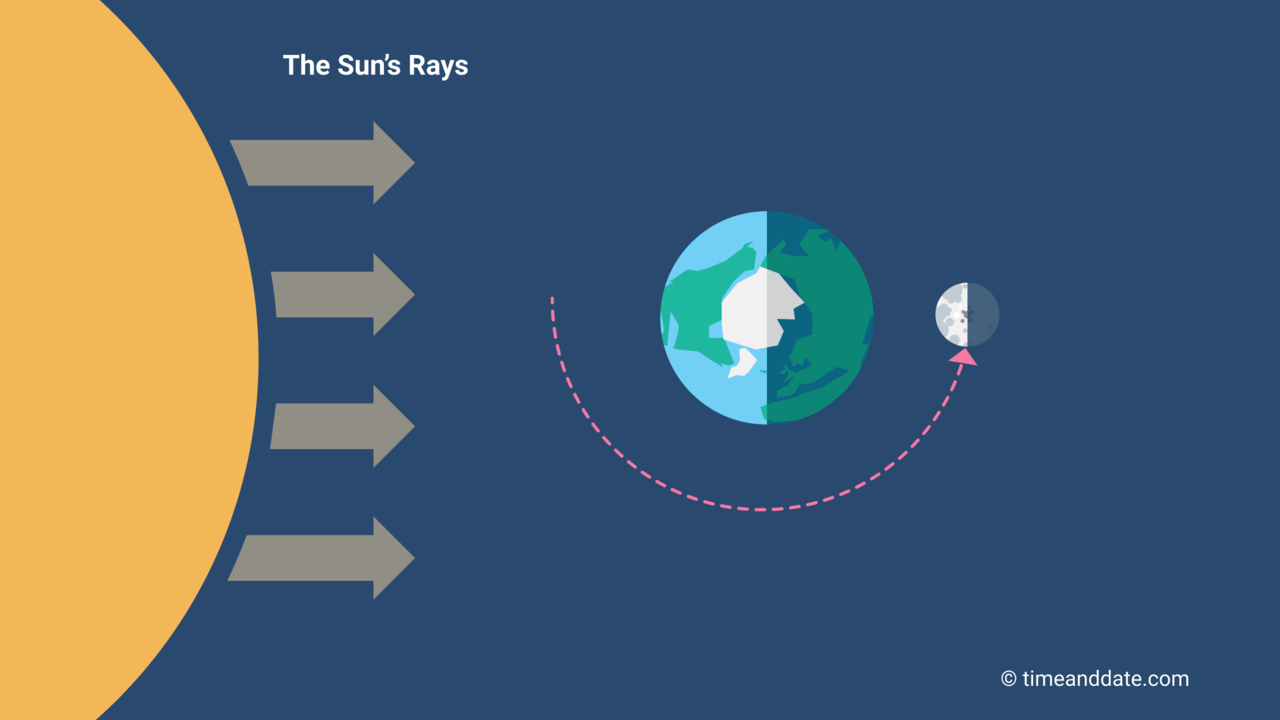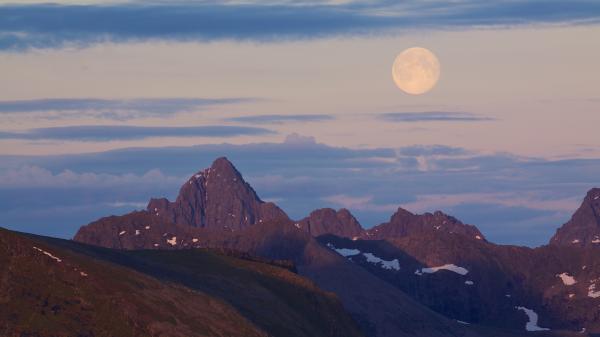Why Is the Full Moon in the Daytime?
As a rule of thumb, a Full Moon can only be seen at night. So, why do our Moon Phase Charts show that some Full Moons occur in the daytime?


Moon phases are defined by the Moon's position, not its visibility.
©timeanddate.com
Where on the Moon is the South Pole?
Full Moon Only Visible at Night
During the moment of the Full Moon, the Sun and the Moon are on opposite sides of the Earth, and the Moon's illuminated side faces the night side of Earth (see illustration). So, by definition, a Full Moon can usually only be seen during the night.
If you have ever spotted a Full Moon just after sunrise or just before sunset, it is very likely that you saw it at least one day before or after the actual Full Moon phase. Very rarely, if the conditions are just right, you may also be able to see an actual Full Moon very close to the horizon and opposite to the Sun, during sunrise or sunset. In general, however, the Moon is always below the horizon while the Sun is up on the date of the Full Moon.
So, why do our Moon Phase Charts show some Full Moons taking place in the middle of the day?
Is the Moon upside-down in the other hemisphere?
Moonrise and Moonset in my city
Alignment Determines Moon Phase
The answer lies in the method astronomers use to determine the moment of each Moon phase. The phases of the Moon are not defined by the Moon's visibility from a particular location on Earth, but by the Moon's position on its orbit around Earth.
For example, the New Moon phase occurs at the exact moment when the Moon is between the Sun and the Earth, and the three bodies form a more or less straight line. Conversely, it is officially Full Moon when the Moon is aligned with the Sun and Earth while at the opposite end of its orbit, on the night side of Earth.
Astronomers call this alignment a syzygy of the Sun-Earth-Moon system.
Why lunar eclipses don't happen every Full Moon
A Full Moon in Lofoten, Norway. The Moon appears full for 1 or 2 nights around the Full Moon alignement. ©bigstockphoto.com/harvepino
Visibility Depends on Location
By this definition, the Full Moon alignment happens at one specific moment in time, irrespective of the time of day in any particular location. Since half of our planet always faces the Sun, a Full Moon will always occur during the day in some locations, while it is night in others. If your location happens to face the Sun at the moment of the alignment, our charts will show a Full Moon during the daytime—although you will not be able to see it at that precise moment.
Sleep, crime, and menstruation: how Full Moons affect humans
Moon Looks Full for Days
While the Full Moon phase is technically a specific moment in time—the instant of the syzygy—the Moon looks fully illuminated for some days before and after the actual alignment, during the late stages of the Waxing Gibbous Moon and the beginning of the Waning Gibbous Moon.
Therefore, weather permitting, everyone on Earth will see a fully illuminated Moon in the nights surrounding the Full Moon alignment, even though only 98% or 99% of the visible half of the Moon may be illuminated.
Tip: Our Moon Phase charts show the actual illumination percentage for a moment of your choice and a realistic live animation of the current Moon phase.